Nature Nature embodies tranquility and awe-inspiring wonders, it also offers a vast space for contemplation and reflection.
Peat in Figures
The total peatland area across all EU Member States (EU27) spans 268.000 km², with 51% classified as natural. Also known as mires, peatlands are unique ecosystems that support numerous rare, specialized, and endangered species found nowhere else. Globally, they are vital for climate regulation, serving as significant carbon storage. On a regional scale, peatlands play a key role in managing hydrology, reducing flood risks, and acting as natural pollution filters. Around 33.000 km² of peatlands are protected under the EU Habitats Directive (Annex I).
I had no idea how important peat is, to be honest. I only learned about it recently because of an area 10min from where I live called the ‘De Zeverbeek Vallei’. Researchers conducted drilling there, reaching depths of up to 6 meters, where they discovered intact seeds dating back around 10,000 years to the early beginnings of the ecosystem. That’s the last ice age!
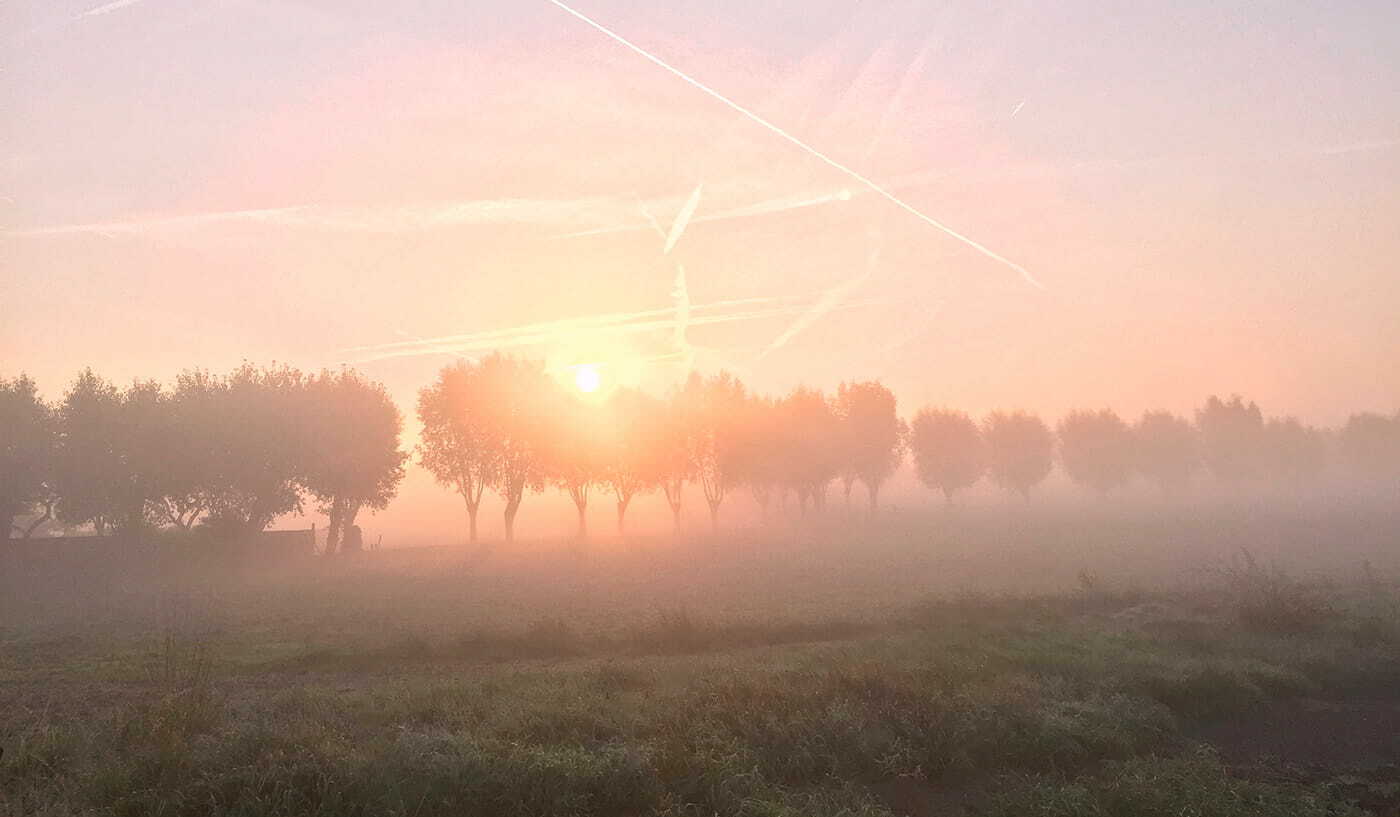
Morning glow at the Zeverenbeekvallei
How does it work?
When plants die, they fall into the water, where the lack of oxygen prevents decomposition. This process traps the carbon contained in the plants—about half of their composition is carbon. Over time, the dead plants accumulate in layers, forming what we call peat. If you prefer an explanation by an actual scientist, I recommend watching this video of the Natural History Museum.
- 33% of the world's carbon is stored in peatlands.
- 3% of the world surface consists of peat.
- 1 mm per year: this much peat is added in optimal conditions.
That is 1 m per 1000 years. - 10 cm per year: that much peat can disappear in an extremely dry year. That means 100 years of peat building lost in 1 year. In a normal year, 1 to 2 cm disappears when the area is drained.
- 5000 years of peat building have already been lost In Belgium.
- 40% of the permitted emissions under the Paris climate agreement will come from peat areas if we do not protect our peat properly.
Carbon Sponge
Considering the recent flooding in Spain, the devastating water-bomb in July 2021—one of the worst floods in Belgium in the past century—and the more recent floods last November in East and West Flanders, it’s clear we need to better protect what remains of our natural flood defences and expand them wherever possible.
We usually lose 1 to 2 cm per year in Belgium, which is 20 years of peat build-up. But in extremely dry years you can sometimes lose as much as 10 cm - so 100 years. On the other hand, if it is very dry for a long time, a wet peat area is a good water reservoir. Nature has the best solutions as some of these peat mosses can absorb twenty times their dry weight in water. That’s amazing!
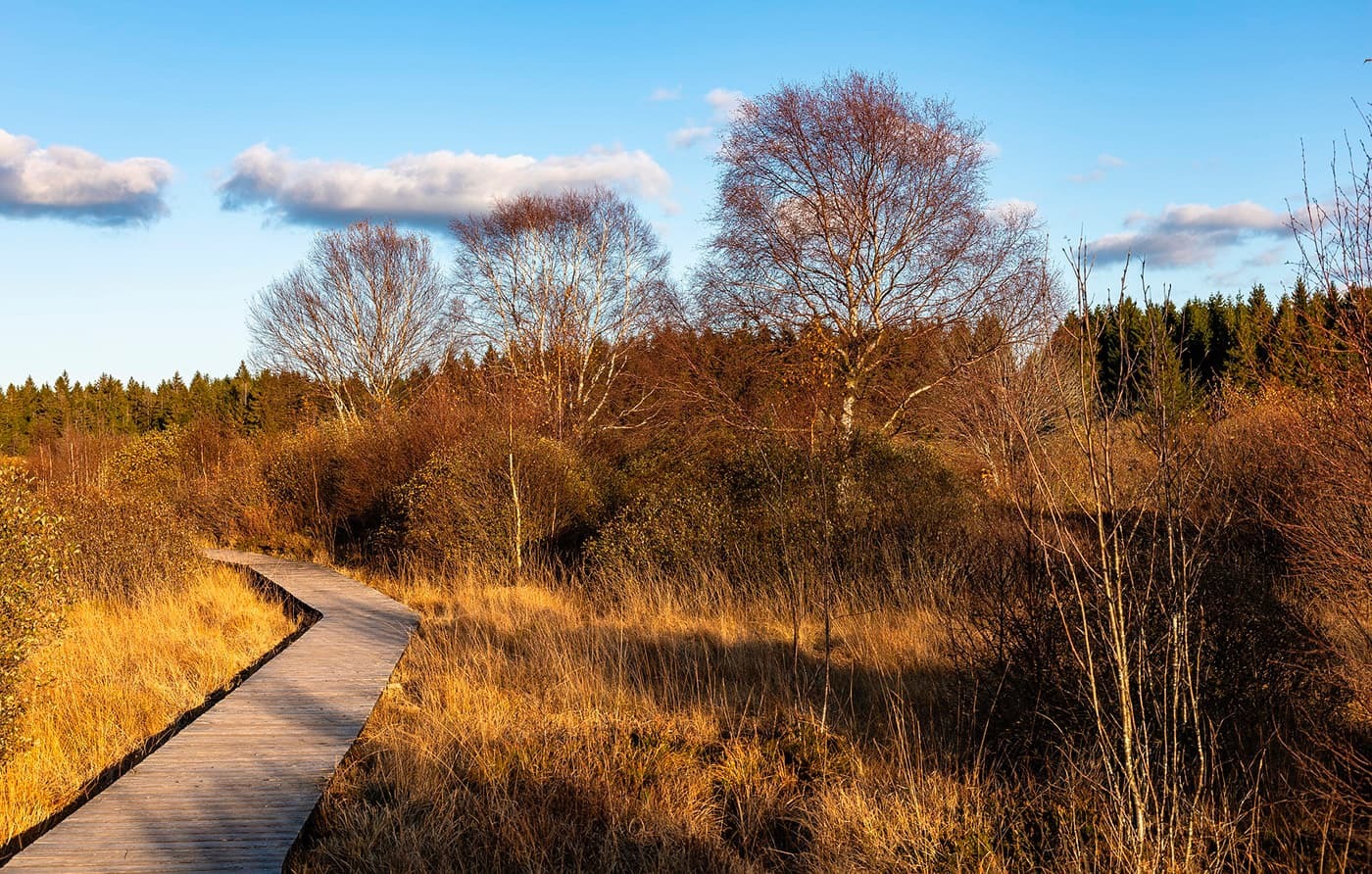
High Fens, one of the last raised bogs in Europe.
When peat areas are drained (for example for agriculture or forestry or peat extraction), the stored CO₂ is released into the atmosphere as a greenhouse gas. So we really need to keep our peatlands wet. In fact to reach climate neutrality by 2050, virtually all drained peatlands should be restored. With that in mind, it seems unwise for the Flemish government to allocate less funding to the Blue Deal. Given the increasing frequency of floods around us, you’d expect them to take the issue more seriously. Ignorance truly is bliss!
High Fens image by Herbert Aust
Illegal Bird Trapping
You would think that in this day and age, birds could live their lives peacefully. I was quite shocked when I recently saw these figures from Bird Protection Flanders about illegal bird trapping. Several cases have even made it to court.
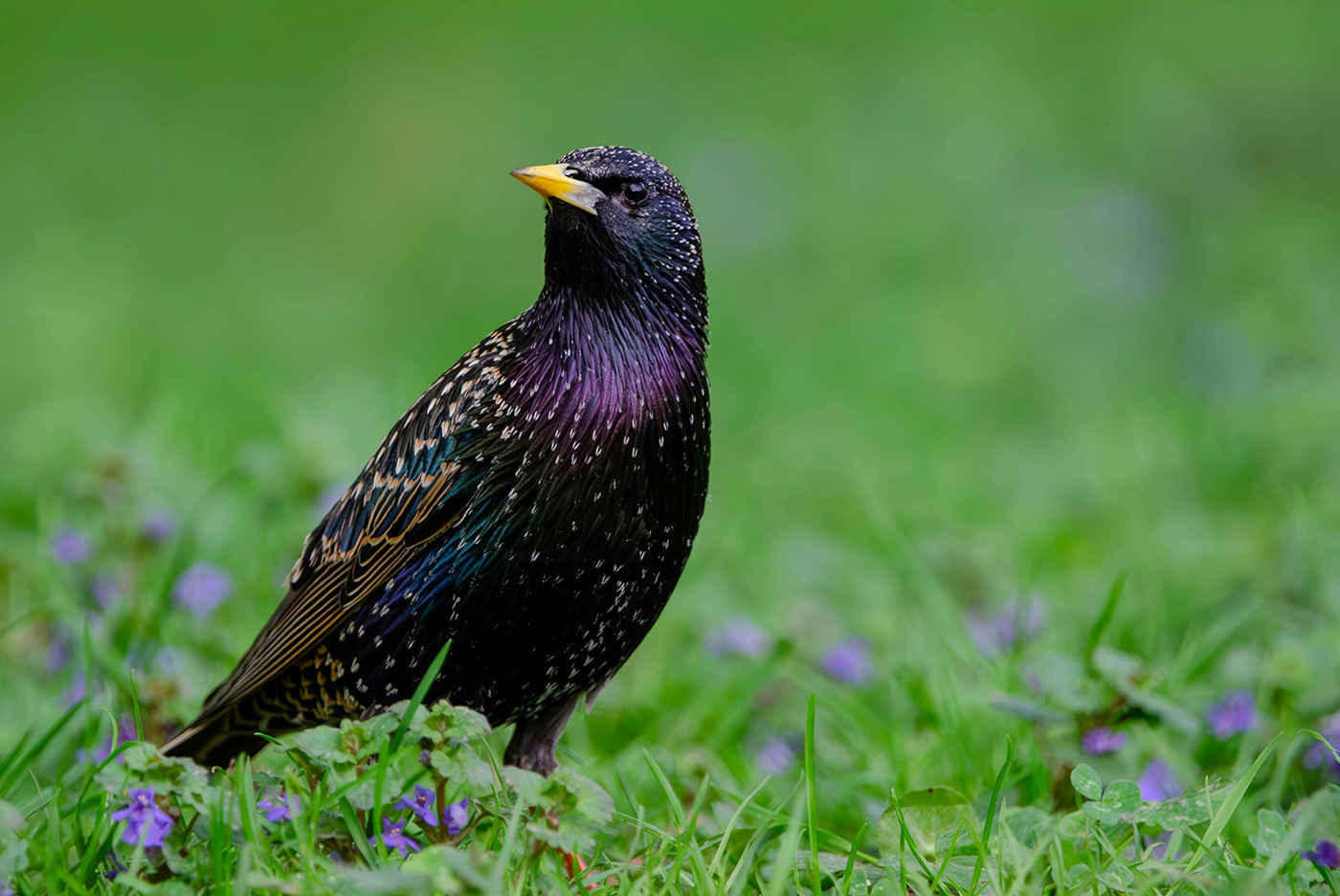
Starling
Facts and Figures
Here are some notable facts and figures about the lawsuits: These cases often involve persistent behavior by perpetrators who have been engaging in this activity for generations and show no awareness of guilt. In one case involving the trade of frozen starlings, the defendant was found to have captured and traded a total of 65,399 starlings between 2001 and 2023. During inspections by the Nature Inspectorate, the following were discovered in various cases:
- 427 live birds: including finches, goldfinches, bruisers, redpolls, siskins, starlings, greenfinches, crossbills and 'black' pheasants (bred pheasants for illegal restocking)
- 8,384 dead birds (found when caught red-handed by the Nature Inspectorate or traded in the past as shown by the accounting records found)
- at least 344 traps.
- large sums of cash: € 103,035 in cash was found in 1 case. The man is said to have traded 10,000 starlings, 400 snipes, 400 hares and 20 deer in 2022.
- in several cases also poison, live decoys and/or weapons
The penalties vary from case to case. Effective prison sentences of 6 months were demanded on several occasions and requested fines amounted to €8,000.
Vinkenzetting
I’m not sure if this tradition exists in other countries, but in Flanders, Belgium, there’s a practice called “Vinkenzetting,” or “Finch sitting.” This tradition dates back to Flemish merchants in 1596 and is considered part of traditional Flemish culture. Participants gather on a closed-off street, each with a numbered box containing a male finch. It is a competitive sport where the male common chaffinches compete to make the highest number of bird calls in an hour. The proximity of the cages increases the number of calls, as the birds sing for mates and to establish territory.
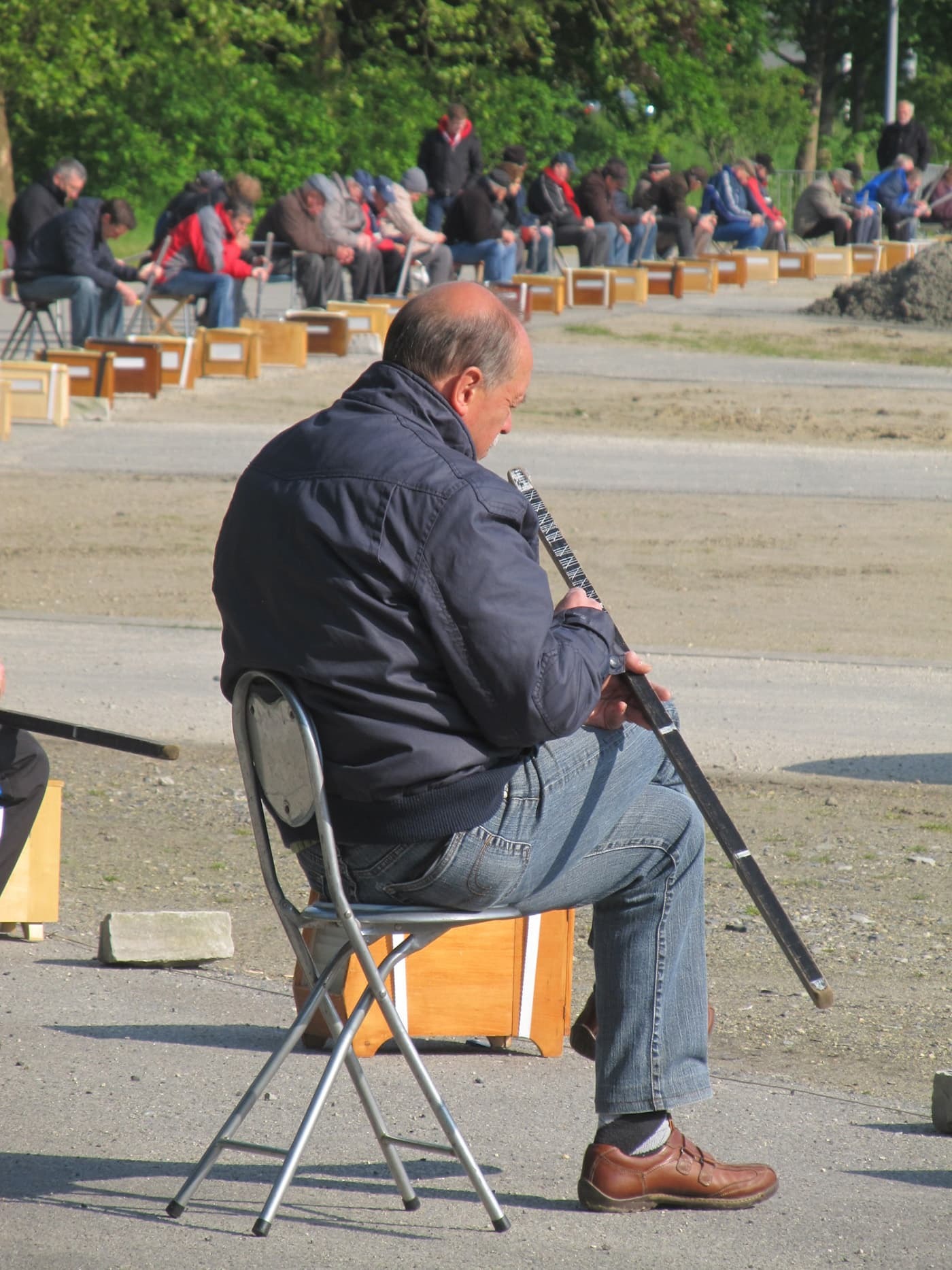
Vinkenzetting Deinze. The long black rod is used for counting.
There has to be silence in that street. When I’m on my bicycle, I always ignore those closed-off streets and ride through, enjoying all the angry looks. No one has said anything so far, but if they did, my only response would be, “Stick yourself in a box and sing for an hour, and see how much you like it.”
Various studies show that the starling population has been declining since the late 1970s. At the European level, the population of the species decreased by 52% between 1980 and 2011. In Flanders, the evolution of the starling population is also described as problematic by the Institute for Nature and Forest Research (INBO). Between 2007 and 2018, a 36% decline was recorded in Flanders. These illegal traps aren't exactly helping.
Photo Finch sitting By Donarreiskoffer - Own work, CC BY 3.0.
Photo Starling by ArWeltAtty Attila.
Nature-inclusive Building
I wasn't familiar with the term initially, but after reading about it, everything falls into place. Extensive research consistently points in one direction: people not only enjoy better health but also greater happiness in green environments. Furthermore, with careful design that incorporates hiding spots and habitats with native greenery, we can contribute to the well-being of birds, hedgehogs, butterflies, bees, and numerous other wild creatures. This approach is known as 'nature-inclusive'.
I recently came across the plans for the 'Faunahuis', a versatile nature facility within Bos t'Ename, a nature reserve located in the Flemish Ardennes (Belgium). The nature farm should evolve into a prime example of nature-inclusive and eco-friendly architecture, exclusively utilizing renewable construction materials like wood, straw, and clay sourced from the nearby surroundings. It will serve as an educational space for students to immerse themselves in nature, a refuge for Natuurpunt employees, and a haven for a diverse array of wildlife.
Here's another example found in the construction of the Belgian pavilion, known as "The Green Arch," for the 2020 Dubai Expo. This remarkable pavilion seamlessly combines rich green vegetation with cutting-edge solid wood architecture. Its core purpose is to serve as a blueprint for sustainable progress, paying homage to the regenerative circular economy. It achieves this by utilizing biobased and geo-sourced materials, integrating bioclimatic principles and renewable energy sources, and emphasizing the preservation of biodiversity and the natural environment.
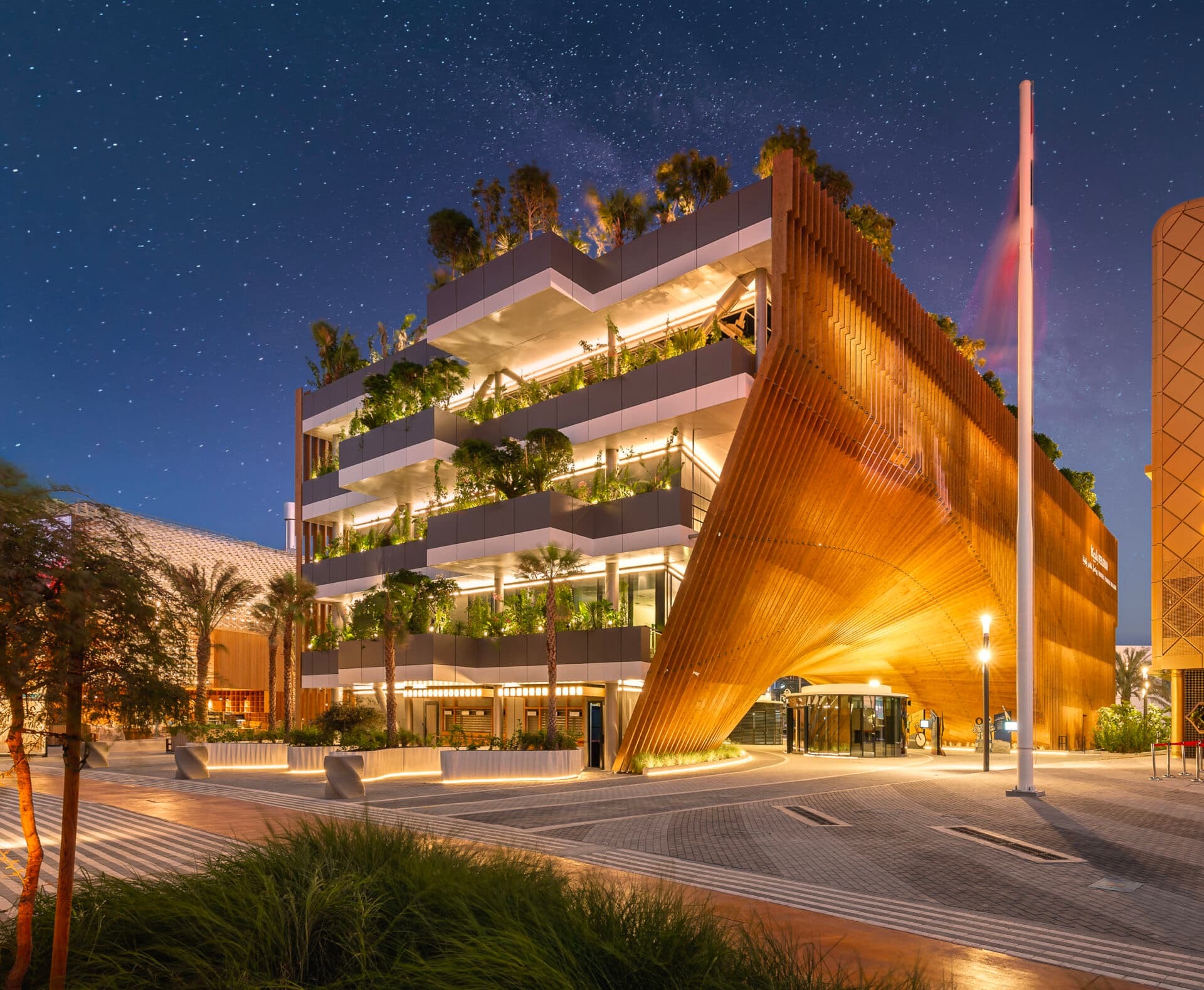
The Green Arch Belgian pavilion Expo Dubai, 2020 by Assar inclusive architecture.
Not Well Known
It's worth noting that nature-inclusive building practices are still gaining traction in Flanders. Countries like the United Kingdom and the Netherlands are considerably ahead in the field of nature-inclusive construction. For example, in the Netherlands, nesting boxes are a legal requirement in new-build homes. This approach not only promotes animal-friendly building but also plays a crucial role in preserving biodiversity.
Nature-inclusive construction is fundamentally about creating a hospitable environment for various forms of wildlife, including mammals, birds, as well as vital insects like butterflies and bees. However, its scope extends far beyond that. Embracing nature-inclusive principles yields numerous additional benefits. Your surroundings transform into a greener space and therefore more climate-resistant, providing natural cooling, and fostering a habitat for a diverse array of life forms.
Things You Learn
For instance, I appreciate having large windows to let in ample light as it enhances my well-being, but it's essential to recognize that for birds, windows are a leading cause of fatalities. An American biologist named Daniel Klem Jr. estimated that in the United States alone, between 100 million to 1 billion birds perish annually due to collisions with windows.
It's interesting to note that opponents of wind turbines might present a different perspective. The house sparrow is one of the significant casualties of the construction industry. In Brussels, its population has declined by a staggering 95 percent since 1992, and in Flanders, there has been a 42 percent decrease since 2007.
On a personal note, my garden used to be devoid of house sparrows. Several years ago, I initiated a feeding regimen using all-season seeds, and over time, I cultivated a garden that fulfills some key preferences of house sparrows, like hedges and shrubs for shelter. Additionally, I ensured there was water nearby for drinking and bathing. Although they didn't appear right away, with persistence, a pair eventually arrived, and through patient observation, they transformed into a family that now returns each year. Over time, the group has expanded to about 15, and it's truly delightful to witness the young sparrows being nurtured and learning the ropes.
Things You Can Do
De-paving is the starting point for everything, as most people likely understand by now. Following that, an abundance of greenery, ideally in layers, from ground covers to plants and shrubs, all the way up to trees. If you then refrain from using pesticides, avoid fertilizers, and reduce mowing, you're well on your way. Nature takes care of the rest, if you permit it.
Creating Nesting Sites
Numerous aesthetically pleasing options exist to offer nesting spaces for wildlife. For instance, when planning your home, you can consider incorporating built-in nesting stones. These special bricks, designed to replace standard bricks, serve as ideal nesting spots for birds, butterflies, bees and bats. If you haven't included this feature in your initial design, you can also choose to install birdhouses.
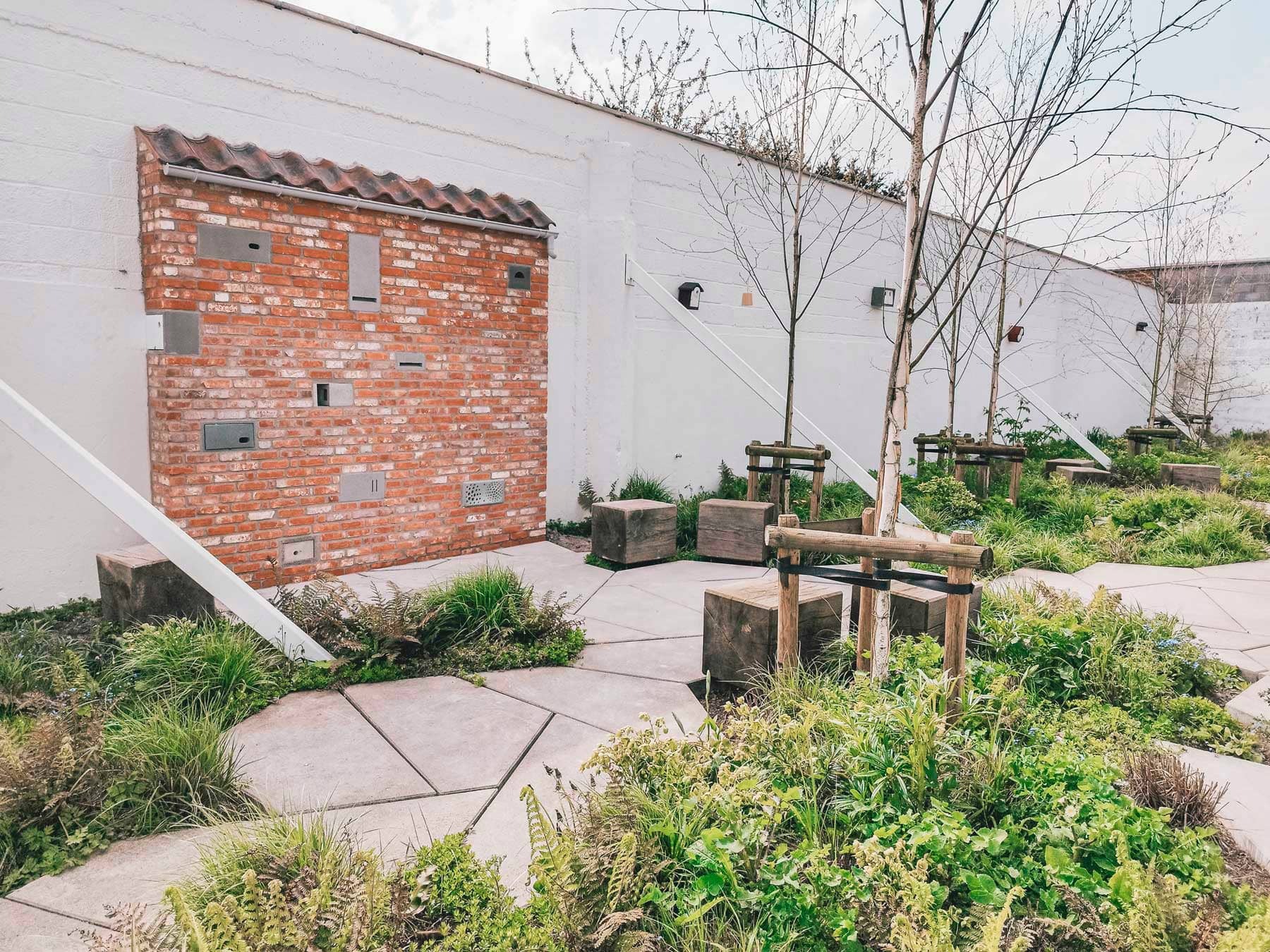
Demo wall built-in bricks at Acasus, Provincial Center, West Flanders.
Around the house
Green: provide enough green in your garden with plants, shrubs, flowers and trees. Don't have a garden? Then a facade garden or a roof garden is also a good solution! Ivy and vines have the capacity to reduce the temperature of a wall by as much as 15 degrees, which is a significant benefit, particularly in urban areas where the impacts of climate change are more pronounced.
Incorporating solar panels on your green roof can increase your yield by an extra 4 to 6 percent.
Green roofs have enormous potential as they provide food, shelter and breeding grounds for various animals. Always choose native plants, trees and shrubs. Green roofs also offer cooling benefits both inside and outside the building. The vegetation acts as a heat buffer, providing insulation that keeps the interior up to 4 degrees cooler during the summer, eliminating the need for air conditioning. This can result in electricity savings of up to 7 percent.
Incorporating solar panels on your green roof can increase your yield by an extra 4 to 6 percent. This is due to the fact that solar panels achieve their best performance at 25 degrees, and each degree beyond that temperature could result in a potential power output reduction of up to 1 percent.
Even during heatwaves, a green roof doesn't exceed 35 degrees in temperature, significantly cooler than a black roof, which can reach scorching temperatures of up to 80 degrees in direct sunlight. Moreover, there are winter benefits too, as heating costs typically decrease by an average of 3 percent.
Feeding systems: Animals eat their food in different ways. See which animals live in your area, and adjust your systems accordingly.
Water: Provide a water source. That can be something small such as a water dish, but you can also resolutely go for a wadi or shallow pond.
What benefits animals also benefits humans. There's substantial evidence demonstrating that things like birdsong, for instance, have a calming and stress-reducing impact. Absolutely accurate. I find immense pleasure and relaxation in waking up to the melodious song of the blackbird, for instance.
No Mow May
Like each year I'm taking part in 'No Mow May'. Here in Belgium known as 'Maai Mei Niet'. Well I'm not doing it only in May but the whole year round. We only mow like 3x a year. Why? Well by not mowing your grass in May, you provide a lot of bees and butterflies with crucial food sources.
Flanders has about 2.5 million gardens. They cover 10 to 12 percent of the territory. On average, half of a garden is lawn. So if each of us makes his or her lawn more flowery, even just a little, it can have a big impact. Every square meter of extra blooming flowers provides extra pollen for our insects. Doing nothing has never been so good for our biodiversity.
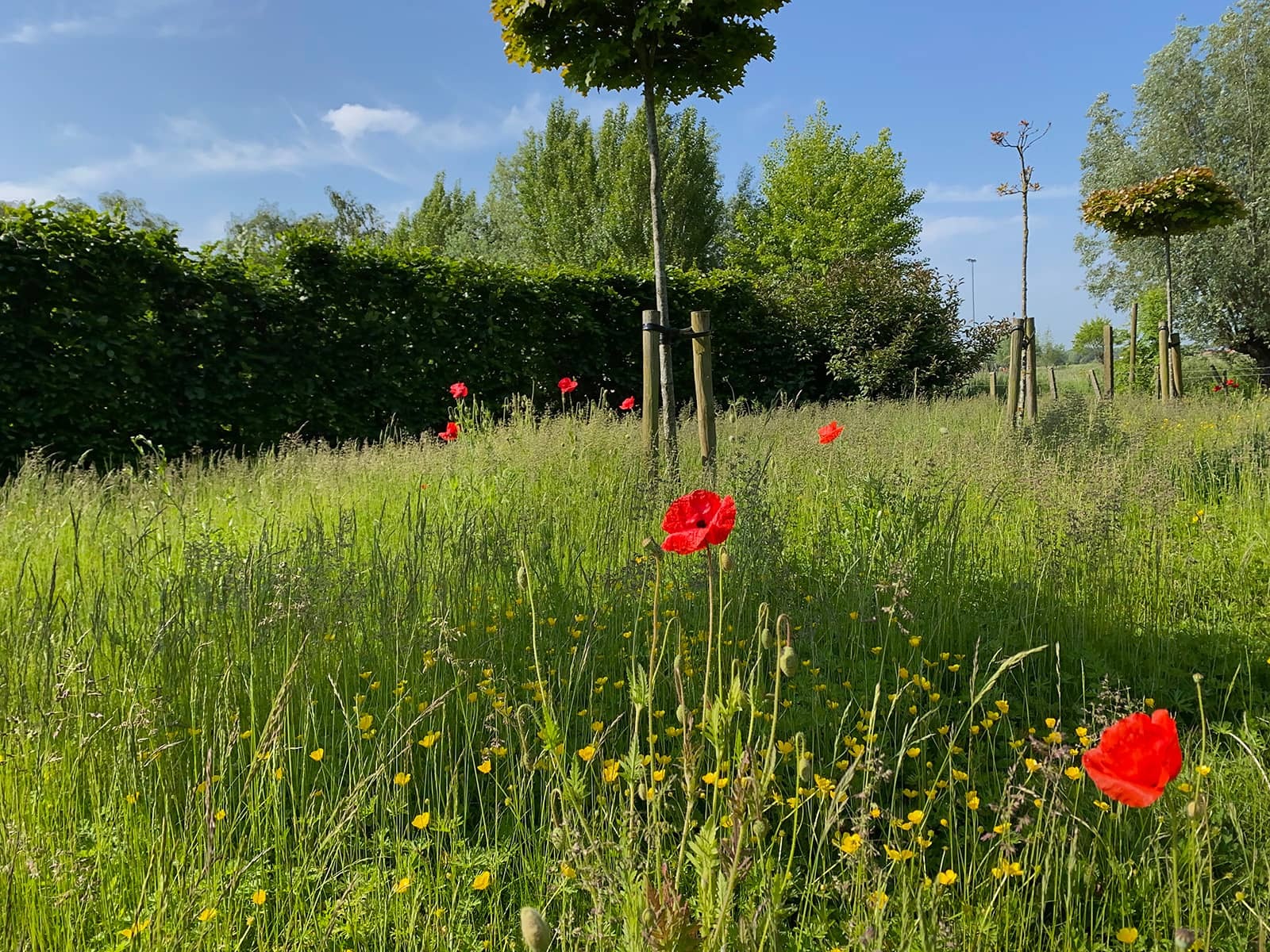
My backyard garden
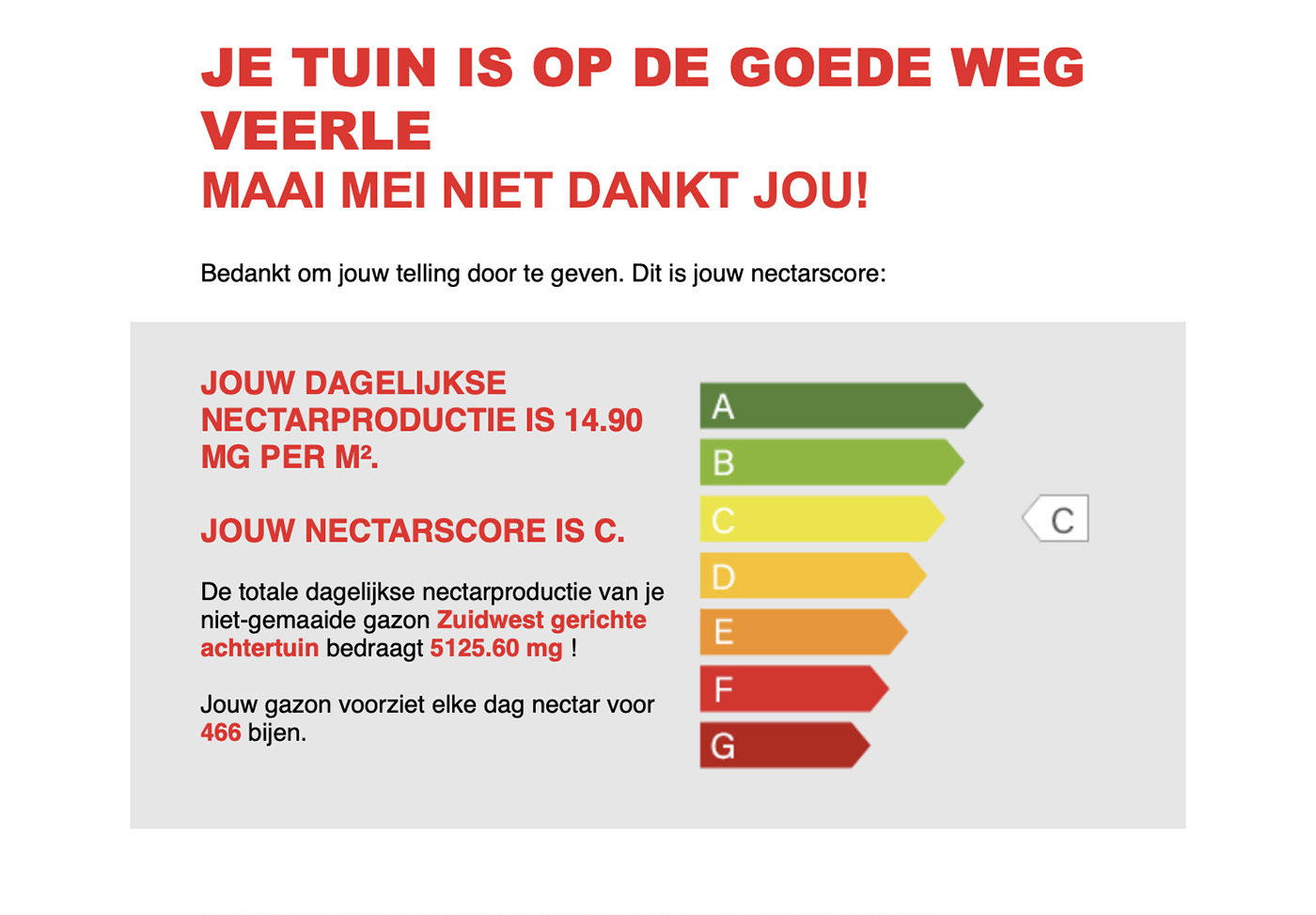
My nectar score
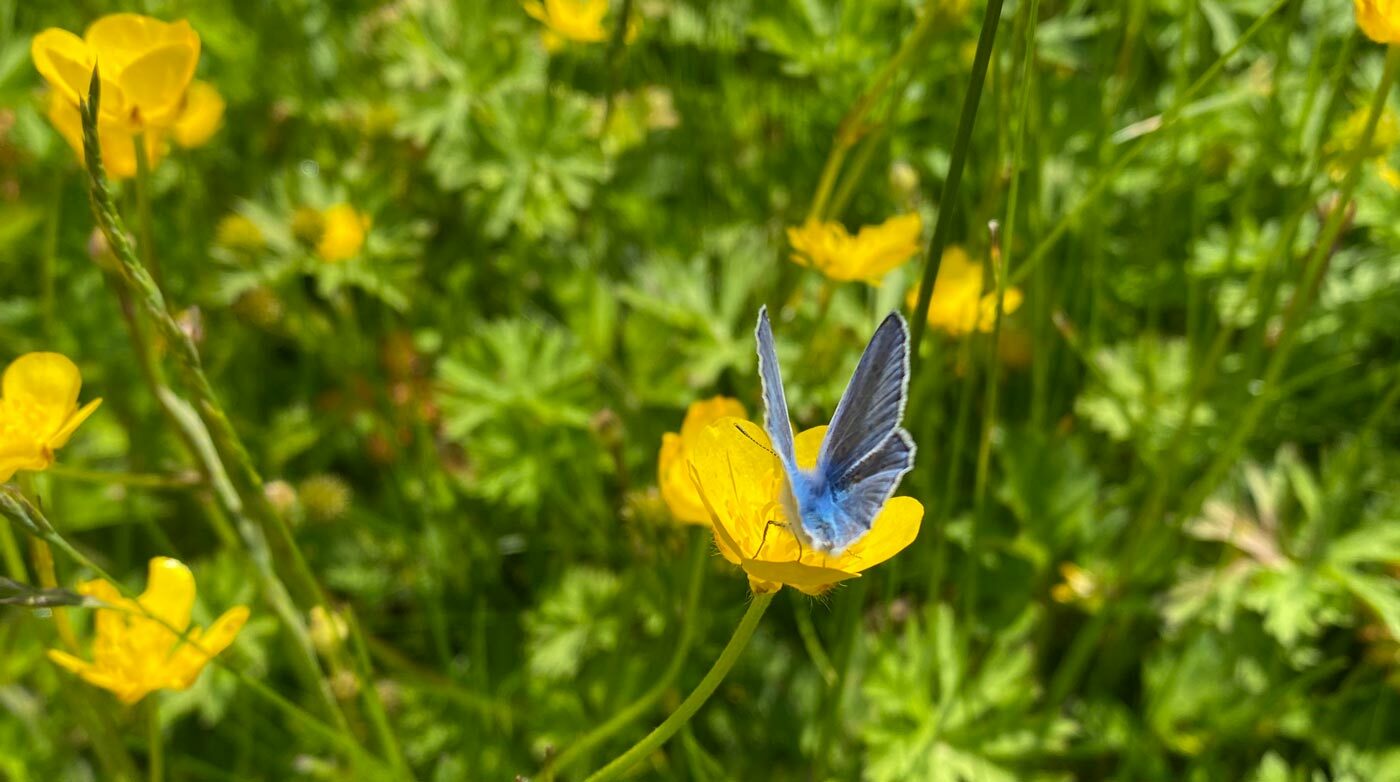
Common Bleu butterfly
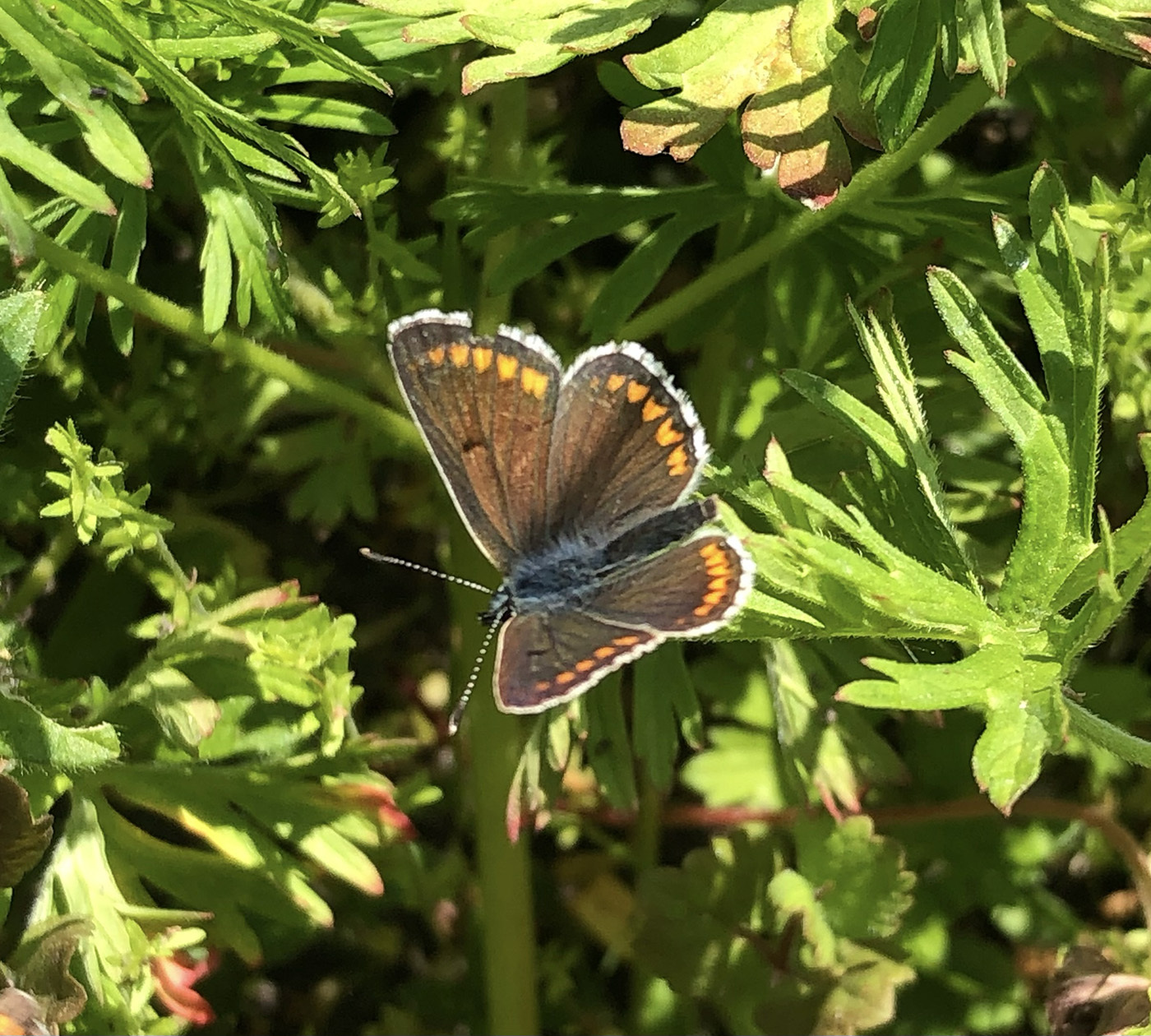
Brown Argus butterfly

